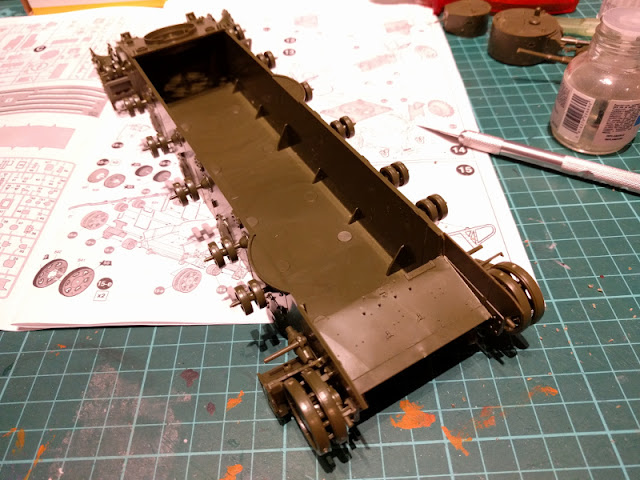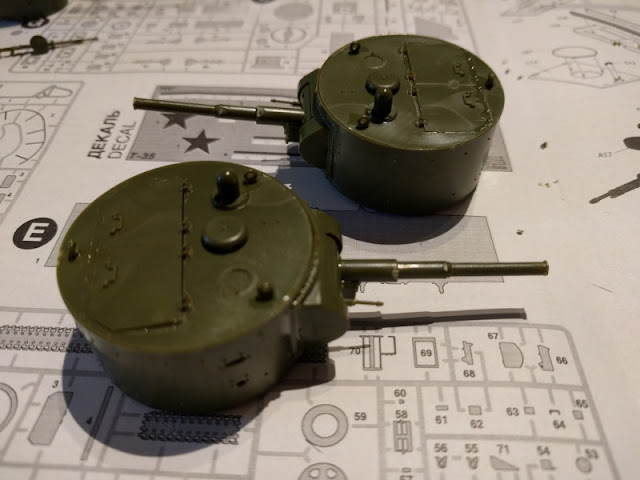The main turret
After the tracks were done I finally got to work on the main turret. The construction order in the instructions was again somewhat curious, first I was to build the shell of the turret, then to proceed to assembling the gun itself.There were a good amount of details in the gun itself, especially if one was to build the model with (at least) the main turret's hatches open. Or, if one felt brave enough, to paint the insides and keep the turret off the tank itself. I really didn't think I'd go for that, so most likely this was just going to be just my own sick ponderings (if someone reading this got inspired, goody).
The tank's main gun (a 76.2mm M27/32 (3" according to the converter)) looked fun and was a multiphase build. Technically that (and many other things in T-35) it was a bad idea, I've understood, but then again, many tank weapons were suboptimal during the early war years. I guess they got something broken with that gun in real life, but according to wikipedia the gun was replaced with a slightly better gun.
Workspacelessness
Now I couldn't remember if any of the tanks I'd built so far had a turret's details modeled this far. A typical turret had a couple of foldable bench-plates at best and that's been it. Here we had a proper-looking support structure and all :o These aforementioned beams were a pain in the donkey, as getting the top ring, the baseplate and these things aligned and cured properly wasn't that quick and easy. Some light and gentle swearing was required. In the end it all was just pretty good and I was quite content with it.Turret assemblage
Gluing the heavyish gun-containing turret part onto the previous subassembly was hair-greying. Because of the mass differences I didn't even consider building it updright and then doing it upside down was still a bit complicated, as the baseplate was still heavy enough to bring some exta torsion to the show. Still, even this ended up being just fine.The last "Emma" LMG was installed into this turret, of course. I wanted to glue it at a bit of an angle, to prevent all the spikes of this hedgehog from pointing into the same direction. Some gentle variety, you know?
All in all this was damn time consuming, as my three quarters were done and I felt like I had gotten nothing done. When packing stuff up I tried out the turret and then saw that hey, there was visible progress again.




















































